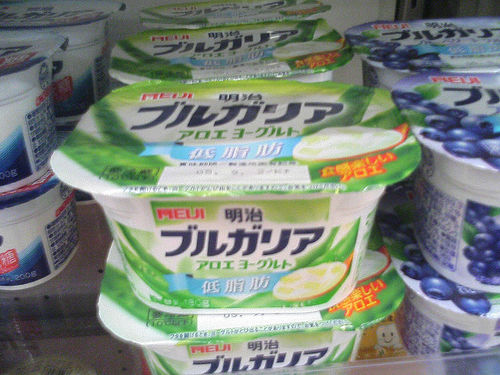For some reason, living in Japan robs a person of the ability to open the hood of their car. When I lived in the U.S., I was quite comfortable giving my car a tune-up, changing spark plugs and so on, but since coming to Japan I find I haven’t touched my car’s engine in over a decade. My wife is indicative of most Japanese on the subject of auto maintenance — she recently said to me, “I opened my hood once, but I didn’t know which one was the engine.” This is partially due to excellent Japanese service — a helpful uniformed employee will cheerfully check your oil and air when you buy a tank of gas — but another reason is “sha-ken,” a government-mandated automobile maintenance check-up you have to get every two years. Since sha-ken is expensive, costing $800 or more, which includes various road taxes, foreigners generally hate it, but the upside is that cars are safer and you get your regular maintenance done for you as part of the deal. The sha-ken check-ups have a somewhat cynical purpose too: since new cars get three years without having to get the check-up, it provides a useful excuse for Japanese to buy a new car sooner than they otherwise would, and no doubt contributes millions to car manufacturers’ bottom lines. Motorcycles also have sha-ken, although those with 250 cc and smaller engines don’t, which creates more demand for small-engine motorcycles than would exist in other countries.
One of the most respected positions in Japanese life is that of shacho 社長, or company president, and like some other terms such as sensei 先生 (which literally means “the one who was born before me” and is said to teachers, doctors and politicians), it indicates a high level of respect. As in America, business leaders are looked up to, and the news media regularly reports on leaders like Goshn-shacho (the man who turned Nissan around), the hardworking Masayoshi Son-shacho of Sofbank, and of course charismatic Livedoor president Takafumi Horie, who recently tried to win his first seat in the Japanese Diet but failed in the last election. The term shacho is sometimes thrown around with little care for its actual meaning. If you go into a Japanese bar, the lady who pours your drink will likely call you shacho to make you feel good.
Memorizing the names of the months in English must be difficult for Japanese, but it’s easy going the other way — the months in Japanese are all just numbers followed by the kanji for month (e.g. ichi-gatsu 一月 is January, ni-gatsu 二月 is February, etc.). They get their revenge, though: although the days of the month in Japanese are expressed with numbers, just like in English, there are special names for the first ten days of the month, which must be memorized, always a chore for gaijin learning Japanese. The days of the week are interesting, too — each is associated with a kanji that represents the original European origin. The days of the week are getsu-yobi (月曜日, lit. “moon day”), ka-yobi (火曜日, “fire day” since the first character for Mars is “fire”), sui-yobi (水曜日, “water day,” from the Japanese name for the planet Mercury), moku-yobi (木曜日, “wood day,” from the name for Jupiter), kin-yobi (金曜日, “gold day,” from Venus), do-yobi (土曜日, “earth day,” from Saturn), and nichi-yobi (日曜日, “sun day,” from good old Sol).

Scenes from a Japanese convenience store. This is the famous aloe yogurt, yogurt made with the fully edible plant aloe. It’s nice, not to sweet, and prevents dryness and cracking in the stomach lining.















